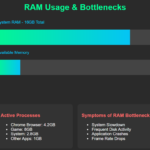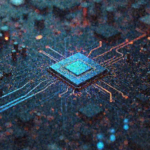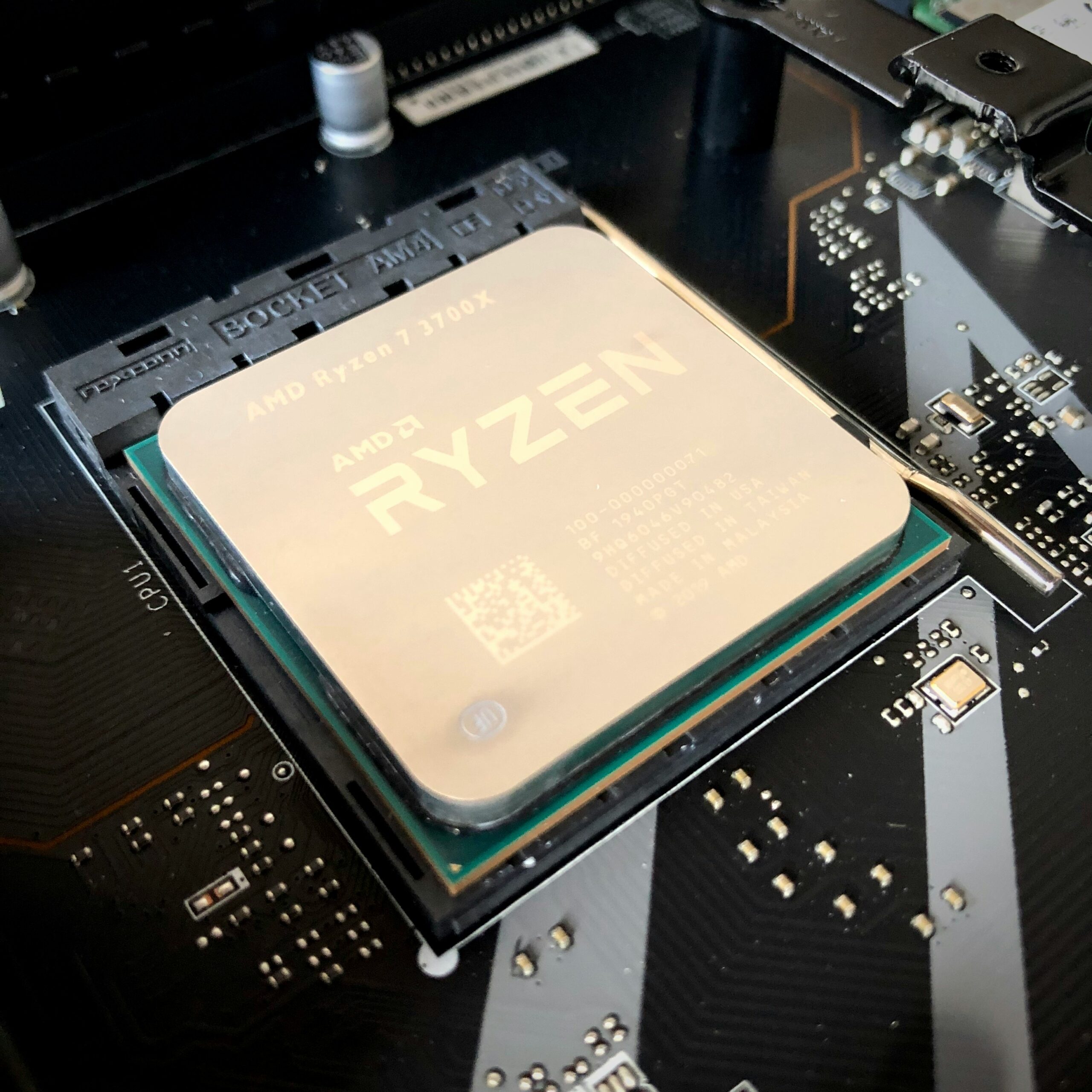Bottleneck Calculator: Discover how to optimize your PC performance with our comprehensive guide and tools. Unleash your system’s full potential now!
Bottleneck Calculator
Quickly calculate cycle time, WIP limits, and resource capacity.
| Metric | Description |
|---|---|
| Cycle Time | Time taken to complete one unit. |
| WIP Limit | Maximum number of units in process. |
| Resource Capacity | Total output capability. |
Table of Contents
What is a Bottleneck Calculator?
Bottleneck calculators are essential tools for PC builders and gamers who aim to optimize system performance.
At its core, a bottleneck calculator assesses the balance between different hardware components, specifically the CPU and GPU, to determine if one component is significantly limiting the performance of the other.
This imbalance, known as a bottleneck, can hinder overall system efficiency, leading to suboptimal performance in gaming and other demanding applications.
The purpose of a bottleneck calculator is to identify potential mismatches between the CPU and GPU, allowing users to make informed decisions when selecting or upgrading their hardware.
By inputting the specifications of the CPU and GPU, the calculator analyzes their capabilities and provides an estimate of the degree to which one component may throttle the performance of the other.
This information is crucial for avoiding scenarios where an overpowered GPU is paired with an underpowered CPU, or vice versa, which can lead to wasted resources and poor performance.
Bottleneck calculators are particularly important for gamers and enthusiasts who seek to achieve the best possible performance from their systems.
In gaming, for example, a CPU bottleneck can prevent the GPU from rendering frames at its full potential, resulting in lower frame rates and a less smooth gaming experience.
Conversely, a GPU bottleneck can limit the visual fidelity and resolution at which games can be played, as the GPU struggles to keep up with the demands of modern titles.
Common scenarios where bottleneck calculators are used include building a new PC, upgrading existing components, or diagnosing performance issues in a current setup.
By providing a clear picture of potential bottlenecks, these calculators help users allocate their budget more effectively, ensuring that they invest in components that complement each other and deliver the desired performance.
In summary, bottleneck calculators are indispensable tools for anyone looking to optimize their PC's performance.
By identifying and addressing potential bottlenecks, users can achieve a more balanced and efficient system, leading to a better overall computing experience.
How Bottleneck Calculators Work
Bottleneck calculators are indispensable tools for PC enthusiasts aiming to optimize their system performance.
These calculators analyze the interplay between different hardware components, primarily focusing on the central processing unit (CPU) and the graphics processing unit (GPU).
The core functionality of these tools revolves around assessing potential performance bottlenecks that may arise from mismatched hardware capabilities.
At the heart of a bottleneck calculator lies a set of sophisticated algorithms designed to evaluate key metrics such as processing speed, core count, and clock frequency.
These algorithms compare the specifications of the CPU and the GPU to determine if one component will significantly limit the performance of the other.
For instance, a high-end GPU paired with a mid-range CPU could lead to a scenario where the CPU cannot keep up with the data processing demands of the GPU, creating a bottleneck.
To provide accurate results, bottleneck calculators utilize comprehensive databases of hardware specifications and performance benchmarks.
These benchmarks are derived from real-world tests, including gaming and productivity workloads, which offer insights into how various CPU and GPU combinations perform under different conditions.
By leveraging this data, bottleneck calculators can simulate the performance of a specific hardware setup and identify potential bottlenecks.
One of the key metrics used in this analysis is the utilization percentage. This metric indicates how much of the CPU or GPU's capacity is being used during a given task.
If the GPU utilization is consistently high while the CPU utilization remains low, it suggests that the GPU is waiting for the CPU to process information, thus indicating a CPU bottleneck.
Conversely, if the CPU utilization is high and the GPU utilization is low, a GPU bottleneck is likely.
Overall, bottleneck calculators provide a valuable service by allowing users to make informed decisions when building or upgrading their PC systems.
By understanding the technical workings of these tools, users can better appreciate the importance of balanced hardware configurations in achieving optimal system performance.
Benefits of Using a Bottleneck Calculator
Using a bottleneck calculator offers several benefits. First, it helps in making informed decisions when upgrading or building a new PC.
By understanding which component is the bottleneck, users can prioritize their purchases effectively.
Second, it can improve system performance by ensuring that all parts are well-matched, preventing issues like stuttering or lag during gaming or intensive tasks.
Lastly, it can be a cost-effective measure, as users can avoid unnecessary upgrades and focus on the components that will give the most significant performance boost.
Choosing the Right Bottleneck Calculator
There are numerous bottleneck calculators available online, each with its own features and accuracy levels.
When choosing a bottleneck calculator, look for one with a user-friendly interface, reliable data sources, and good reviews from the community.
Additionally, some calculators offer more advanced features, such as recommendations for future-proofing your system or detailed performance analysis reports.
Types of Bottlenecks
Bottleneck Calculator by Games
A bottleneck in a computer system can significantly hinder performance, and understanding the different types is crucial for diagnosing and addressing issues.
The primary types of bottlenecks include CPU bottlenecks, GPU bottlenecks, and RAM bottlenecks. Each of these can affect system performance in unique ways.
CPU Bottlenecks: A CPU bottleneck occurs when the central processing unit (CPU) is unable to process tasks quickly enough to keep up with other components, such as the graphics processing unit (GPU).
This is often noticeable in scenarios where the CPU must handle complex calculations or multitasking.
For example, in gaming or high-end software applications, if the CPU is maxed out while the GPU is underutilized, users may experience lag or slow performance despite having a high-end graphics card.
GPU Bottlenecks: Conversely, a GPU bottleneck happens when the graphics card cannot keep pace with the CPU, leading to subpar graphical performance.
This is common in graphically-intensive applications like video editing or gaming at high resolutions.
A telltale sign of a GPU bottleneck is when the GPU usage hits 100% while the CPU remains relatively idle. Upgrading to a more powerful GPU can often resolve this issue.
RAM Bottlenecks: RAM bottlenecks arise when the system runs out of available memory to store active data, causing it to rely on slower storage solutions such as hard drives or even SSDs.
This can lead to significant slowdowns, especially in multitasking environments or when running memory-heavy applications.
For instance, video editing software or virtual machines may require substantial amounts of RAM, and insufficient memory can cause considerable delays and reduced efficiency.
Understanding these different types of bottlenecks is essential for optimizing your computer system. Identifying whether a CPU, GPU, or RAM bottleneck is affecting performance can guide you in making informed decisions about hardware upgrades or configuration adjustments to achieve a balanced and efficient system.
Popular Bottleneck Calculators
Bottleneck Calculator
Find out which component is causing a bottleneck.
Bottleneck calculators have become indispensable tools for gamers, developers, and hardware enthusiasts aiming to optimize their PC performance.
Among the most popular bottleneck calculators, PC-Build's Bottleneck Calculator and CPU Agent stand out due to their comprehensive features and user-friendly interfaces.
PC-Build's Bottleneck Calculator is widely praised for its extensive database and ease of use. Users can effortlessly input their GPU and CPU models to receive an immediate bottleneck percentage, providing an accurate measure of potential performance issues.
The tool also offers suggestions for hardware upgrades, helping users make informed decisions.
However, a limitation of this calculator is its dependence on user-reported data, which might occasionally lead to discrepancies.
CPU Agent, another notable bottleneck calculator, is highly regarded for its detailed analytical capabilities.
This tool goes beyond simple bottleneck percentages by providing in-depth performance metrics, including FPS estimates for various games and resolutions. CPU Agent's strength lies in its ability to simulate real-world performance scenarios, making it an invaluable resource for gamers.
However, its comprehensive nature can be daunting for beginners, and the wealth of information may overwhelm those seeking quick answers.
Other notable mentions include GPUCheck and UserBenchmark. GPUCheck offers a straightforward interface with a focus on gaming performance, allowing users to compare different hardware configurations quickly.
It is particularly useful for gamers looking to optimize their setups for specific titles. UserBenchmark, on the other hand, provides a holistic view of system performance by benchmarking multiple components simultaneously.
While it offers valuable insights, some users have raised concerns about potential biases in its scoring system.
In summary, the choice of bottleneck calculator largely depends on user needs and expertise. PC-Build's Bottleneck Calculator is ideal for users seeking simplicity and quick results, while CPU Agent caters to those desiring detailed performance analyses.
Other tools like GPUCheck and UserBenchmark offer additional options, each with unique strengths and limitations.
Ultimately, leveraging these calculators can significantly enhance system performance and ensure an optimal gaming or computing experience.
Interpreting Bottleneck Calculator Results
When utilizing a bottleneck calculator, understanding the results is crucial for optimizing your computer's performance.
These tools typically provide a percentage indicating the extent to which one component is limiting the performance of another.
A foundational concept to grasp is that a lower percentage represents a more balanced system, whereas a higher percentage indicates a significant performance disparity between components.
Generally, a bottleneck percentage below 10% is considered negligible and suggests that your CPU and GPU are well-matched.
Results showing a percentage between 10% and 20% indicate a moderate bottleneck, which might warrant a closer look, especially if you are experiencing performance issues.
If the percentage exceeds 20%, this signifies a substantial bottleneck that could severely impact your system's efficiency.
In such cases, upgrading the limiting component is often recommended to achieve a more harmonious performance balance.
Bottleneck calculators also provide detailed reports, highlighting which specific tasks or applications are being affected the most.
For instance, the report might show that gaming performance is hindered due to an underpowered GPU, or that multitasking efficiency is compromised because of an inadequate CPU.
Understanding these details allows you to make informed decisions about potential upgrades or adjustments.
If a significant bottleneck is identified, several steps can be taken. First, consider upgrading the component causing the bottleneck; for a high GPU bottleneck, investing in a more powerful graphics card can provide immediate improvements.
Alternatively, optimizing your system by adjusting settings such as resolution and graphics quality can mitigate the impact of the bottleneck without the need for hardware changes.
Additionally, ensuring that your system drivers are up-to-date can sometimes resolve performance issues without further investment.
Properly interpreting bottleneck calculator results empowers you to make strategic decisions, ensuring your system runs efficiently and effectively. By understanding and addressing these bottlenecks, you can enhance your overall computing experience.
Real-World Application and Limitations
Bottleneck calculators serve as valuable tools for PC enthusiasts and gamers aiming to optimize their hardware configurations.
These calculators estimate potential performance bottlenecks by analyzing the compatibility between various components, such as the CPU and GPU.
However, it is crucial to understand that while bottleneck calculators provide a useful starting point, they are not infallible and should be considered within a broader context.
One common misconception is that bottleneck calculators can offer a definitive prediction of performance. In reality, these tools often rely on generalized data and may not account for specific variables, such as game optimization.
For example, a game that is well-optimized for multi-core processors might perform differently compared to one that is optimized for single-thread performance. Consequently, the actual experience may vary depending on the software in question.
Moreover, bottleneck calculators typically focus on hardware interactions and may overlook software bottlenecks that can equally impact performance.
Issues such as poor driver support or inefficient coding practices can significantly affect system efficiency, independent of the hardware configuration.
Users must therefore consider both hardware and software elements when diagnosing performance issues.
Additionally, user-specific needs play a pivotal role in determining the relevance of bottleneck calculators.
A professional video editor, for instance, might prioritize CPU power and RAM over GPU performance, while a gamer would likely focus on the GPU.
Real-world examples illustrate these nuances: a high-end CPU coupled with an entry-level GPU might work efficiently for compute-intensive tasks but falter in graphic-heavy gaming scenarios.
Case studies further highlight the limitations and practical applications of bottleneck calculators.
For instance, a user with a mid-range CPU and high-end GPU might experience minimal bottlenecking in games optimized for GPU performance but could encounter issues in CPU-intensive titles.
These scenarios underscore the importance of a holistic approach to system optimization, where bottleneck calculators serve as one of several diagnostic tools.
In conclusion, while bottleneck calculators offer valuable insights, they are not a one-size-fits-all solution. Users should integrate their findings with a comprehensive understanding of both hardware and software factors to achieve the best possible performance outcomes.
Optimizing Your System to Avoid Bottlenecks
Optimizing your system to avoid bottlenecks is a multifaceted process that involves selecting balanced hardware components, upgrading existing systems, and tweaking software settings for enhanced performance.
The first step in this optimization journey is to ensure that your hardware components are effectively balanced. When building or upgrading a computer, it is crucial to pair a powerful CPU with a correspondingly capable GPU.
Mismatched components can lead to one part underperforming, creating a bottleneck that hampers overall system efficiency.
Additionally, consider the speed and capacity of your RAM and storage devices, as these can significantly impact system responsiveness and data retrieval times.
Upgrading existing systems can also be a strategic approach to minimize bottlenecks. For instance, if an aging CPU is struggling to keep up with modern applications, a processor upgrade might be necessary.
Similarly, swapping out a mechanical hard drive for a faster SSD can result in significant performance gains.
Another effective upgrade could be adding more RAM to your system, which can alleviate memory bottlenecks that occur when running multiple applications simultaneously.
Besides hardware considerations, optimizing software settings is essential for reducing bottlenecks.
Ensure that your operating system and drivers are up to date, as manufacturers often release updates that enhance performance and compatibility.
Additionally, configuring your system settings to prioritize certain tasks can help in distributing the workload more efficiently.
For example, adjusting the power settings to 'High Performance' mode can ensure that your CPU and GPU are running at their full potential.
Regular system maintenance is also pivotal in avoiding bottlenecks. This includes activities like cleaning out dust from your hardware to prevent overheating, performing regular disk cleanups, and defragmenting your hard drives.
Keeping an eye on resource-intensive applications and managing startup programs can also contribute to a smoother system performance.
By systematically addressing these aspects, you can create a well-optimized system that operates seamlessly with minimal bottlenecks.
7800X3D Bottleneck Calculator
Future Trends in Bottleneck Analysis
The landscape of bottleneck analysis is poised for substantial evolution as advancements in technology continue to accelerate.
One of the most significant trends is the rapid development in hardware technology. Modern CPUs and GPUs are becoming increasingly powerful, with multi-core processors and advanced graphics cards diminishing traditional bottlenecks.
These advancements mean that bottleneck calculators must evolve to accommodate the complexities of newer hardware configurations.
In terms of software, bottleneck calculation tools are experiencing marked improvements. The integration of more sophisticated algorithms and better user interfaces allows for more accurate and user-friendly assessments.
These tools now offer real-time monitoring and predictive analytics, enabling users to identify potential bottlenecks before they become problematic.
Additionally, cloud-based solutions are emerging, allowing for more extensive data collection and analysis, thereby enhancing the accuracy of bottleneck predictions.
Artificial Intelligence (AI) and Machine Learning (ML) are also making significant inroads into bottleneck analysis.
These technologies can process vast amounts of data to identify patterns and predict potential performance issues.
By leveraging AI and ML, bottleneck calculators can offer more personalized and precise recommendations for hardware upgrades, ensuring optimal performance and cost-efficiency.
This shift towards predictive analytics represents a major leap forward, moving from reactive to proactive bottleneck management.
Speculatively, the future of PC building and performance optimization will likely be characterized by an increased emphasis on AI-driven automation.
Automated systems could configure and optimize hardware settings in real-time, minimizing human intervention and maximizing efficiency.
Moreover, advancements in quantum computing and other next-generation technologies could redefine what constitutes a bottleneck, necessitating entirely new analytical frameworks.
As these trends continue to develop, the tools and methodologies for bottleneck analysis will need to adapt, ensuring that users can keep pace with the rapid advancements in technology.
This progression promises a future where bottlenecks are not just identified and managed but anticipated and mitigated in real-time.
Conclusion
In conclusion, understanding how a Bottleneck Calculator works is crucial for optimizing your computer's performance.
By identifying bottleneck issues, you can make informed decisions about upgrading or adjusting your system to achieve better efficiency.
Utilizing a Bottleneck Calculator can save you time and money by pinpointing the specific components that are limiting your system's overall performance.
With the right knowledge and tools, you can ensure that your computer is running at its full potential without any bottlenecks holding it back.
Take the first step towards maximizing your computer's performance today by utilizing a Bottleneck Calculator for accurate analysis and optimization.
FAQs About Bottleneck Calculator
Bottleneck Calculator FAQs: Discover answers to all your questions about optimizing PC performance and preventing hardware bottlenecks.
1. What is a bottleneck in PC performance?
A bottleneck occurs when one component in your PC is significantly limiting the performance of other components.
2. How can I identify if my PC has a bottleneck?
You can use our Bottleneck Calculator tool to analyze your system and determine if there are any bottlenecks.
3. Can upgrading my GPU eliminate a bottleneck?
Upgrading your GPU can help reduce bottlenecks, especially if it is currently the limiting factor in your system.
4. Is CPU or GPU more likely to be the bottleneck in gaming PCs?
It depends on the specific games you play and the rest of your system configuration. Our calculator can help pinpoint the bottleneck.
5. Can overclocking help reduce bottlenecks?
Overclocking can sometimes help alleviate bottlenecks by boosting the performance of your components, but it also comes with risks.
6. How often should I check for bottlenecks in my PC?
We recommend checking for bottlenecks periodically, especially after significant hardware upgrades or changes.
7. Does RAM speed affect bottlenecks?
RAM speed can impact overall system performance, but it may not always be the primary cause of a bottleneck.
8. Are there ways to optimize my PC to reduce bottlenecks without upgrading hardware?
Yes, optimizing software settings, managing background processes, and ensuring proper cooling can all help improve overall system performance and minimize bottlenecks.
Pros of a Bottleneck Calculator:
1. Easy Identification: A bottleneck calculator quickly identifies the weakest component in your computer setup, helping optimize performance.
2. User-Friendly: These tools are typically user-friendly and accessible even for those with limited technical knowledge.
3. Time-saving: It saves time by providing immediate insights without the need for extensive manual benchmarking or testing.
4. Upgrade Guidance: The results can guide users on which hardware components to upgrade for balanced system performance.
5. Prevent Over-Spending: By highlighting where upgrades are needed most, it helps prevent unnecessary spending on non-critical components.
Cons of a Bottleneck Calculator:
1. Accuracy Issues: The calculations can sometimes be inaccurate due to generalized data that may not reflect real-world usage scenarios.
2. Oversimplification: Complex system interactions are often oversimplified, potentially leading to suboptimal upgrade decisions.
3. Lack of Contextual Insight: These tools may not account for specific applications or workloads unique to the user's needs.
4. Potential Misleading Information: Users might get misled if they rely solely on these calculators without considering other performance aspects like thermal management or software optimization.
5. Limited Component Database: Some bottleneck calculators may have outdated or limited databases, affecting the reliability of their recommendations.
By understanding both pros and cons, users can make more informed decisions about using bottleneck calculators as part of their hardware optimization strategy.






